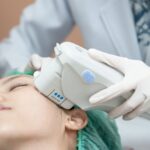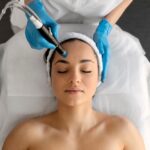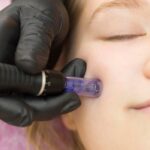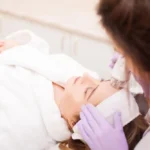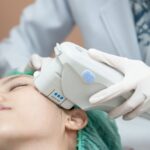CoolSculpting, a popular method for noninvasive fat reduction, is often questioned for its effectiveness in treating cellulite. Yes, CoolSculpting does get rid of cellulite. In this article, we will discuss the effects of CoolSculpting on cellulite, including its mechanism, alternative cellulite treatments, and its pros and cons. Mirror Mirror Beauty Boutique offers an informed view… [Read More]
Blog
Can Ultherapy benefit sagging jowls?
Mirror Mirror Beauty Boutique focuses on addressing the issue of sagging jowls, a problem many people face. We aim to provide clear insights into Ultherapy as a non-surgical solution to improve this condition. Understanding the benefits and how Ultherapy might help with sagging jowls is crucial for those looking for fast cosmetic solutions. Ultherapy is… [Read More]
Is CoolSculpting Really Effective for Belly Fat?
CoolSculpting is a well-known noninvasive treatment for decreasing belly fat. The procedure involves cooling fat cells to the point where they break down, offering a fat-reduction alternative without surgery. Mirror Mirror Beauty Boutique has extensive knowledge of CoolSculpting. We provide clear information on how the treatment functions, its success in targeting abdominal fat, and the… [Read More]
Examining Non-Invasive Fat Loss Treatments
Non-invasive fat loss treatments are gaining ground as a preferred choice for individuals aiming to eliminate resistant fat without undergoing surgery. Various methods, including fat freezing, ultrasound energy, and laser technology, provide options for addressing fat pockets without surgery or extended downtime. Mirror Mirror Beauty Boutique, which has extensive experience in cosmetic procedures, evaluates the… [Read More]
How CoolSculpting is Revolutionizing Non-Surgical Fat Reduction
Are you looking for alternatives to traditional liposuction for fat reduction? CoolSculpting offers a compelling non-surgical approach that may align with your interests. Leveraging advanced technology, this procedure is designed to reduce unwanted fat effectively without the need for incisions or anesthesia, attracting those seeking a convenient and less invasive option. Advantages of Coolsculpting Zero… [Read More]
Targeting Jowls with Ultherapy: The Standard in Skin Tightening
Are drooping jowls impacting your confidence? As we age, the natural degradation of collagen and elastin in our skin can contribute to the appearance of jowls, but state-of-the-art treatments like Ultherapy offer a non-invasive solution to this issue. Dr. Paul Vitenas, with his profound understanding of facial structure and dedication to cutting-edge techniques, stands at… [Read More]
10 SkinPen®️️ Benefits: Enhancing Your Beauty Routine
Have you ever considered the secret behind vibrant, youthful skin? SkinPen®️️ offers a variety of skin rejuvenation benefits, making it a popular choice in beauty routines. As experts in skin care, Mirror Mirror Beauty Boutique harnesses the transformative power of this innovative tool to unlock your skin’s natural radiance and resilience. The benefits of SkinPen®️️,… [Read More]
SkinPen®️️ Precision Microneedling: What You Need to Know
There are many modern treatments available to help achieve vibrant, youthful skin. SkinPen®️️ Precision Microneedling is a minimally invasive therapy that helps rejuvenate the skin by utilizing the body’s natural healing mechanisms. Mirror Mirror Beauty Boutique offers customized microneedling experiences that combine advanced techniques with a deep knowledge of skin physiology. The safety and efficacy… [Read More]
Exploring Ultherapy Brow Lift: Procedure Insights and Patient Experiences
Advances in technology offer several options for brow lift, both surgical and non-surgical. Ultherapy brow lift, a state-of-the-art procedure, utilizes ultrasound technology to rejuvenate your forehead area without the need for invasive surgery. This innovative approach promises a youthful appearance with a brow lift and a reduction in the appearance of aging, catering to those… [Read More]
Ultherapy vs. Morpheus8: A Detailed Comparison for Informed Choices
Considering non-surgical skin rejuvenation options but overwhelmed by choices? Ultherapy and Morpheus8, two leading techniques in cosmetic enhancement without incisions, offer innovative solutions. Dr. Paul Vitenas, an experienced aesthetic medicine practitioner, provides clarity on these advanced procedures, ensuring informed decisions aligned with individual skin profiles. Through thorough comparison, we assess factors like efficacy, comfort, recovery,… [Read More]
- 1
- 2
- 3
- …
- 38
- Next Page »






